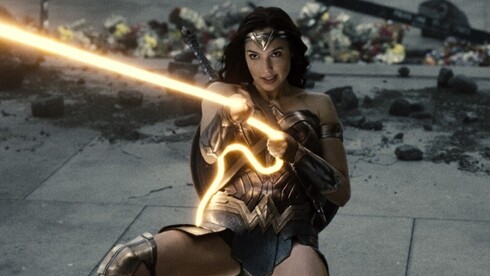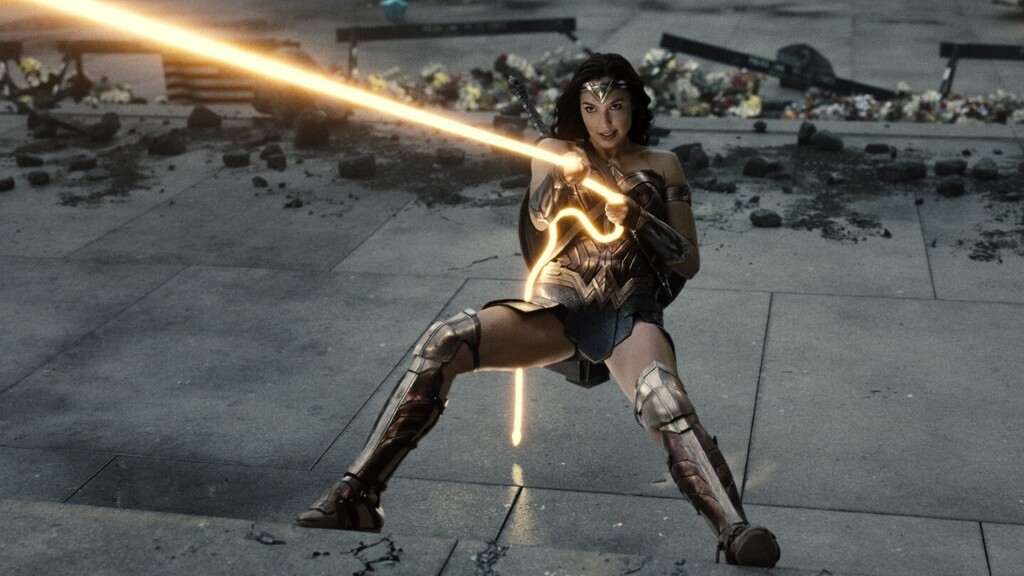

In the last 13 years, Marvel Studios has become the most stable and impressive source of income in Hollywood. In contrast, the collaboration between the Warner Brothers and the DC Comics Company came down mostly to disappointments. Warner / DC has the biggest superheroes in pop culture – Superman, Batman, and Wonder Woman. The huge investments in these films led to revenues that were, for the most part, mediocre. The blame was laid at the door of Zack Snyder, the man whose vision came true in these films. He designed in “Man of Steel” (2013) a gloomy Superman who eventually even kills General Zud on purpose. In “Batman vs. Superman: Dawn of Justice” (2016) he compressed and destroyed two of the great events in the superhero comics: the confrontation between Batman and Superman, and the death of Superman by the space monster Doomsday.
The cinematic universe of DC in the Snyder version is of grumpy and bitter superheroes, and synthetic aesthetics in gloomy pixelization and overuse of slow motion. Above all, there is an overriding importance of “statements” about American society and culture and politics. But the desire to align with Marvel’s success turned into a frenzy. Already in the third film Snyder was supposed to present the formation of the Justice League and lead it into a confrontation with the supervillain corresponding to Marvel’s Thanos.
In “Justice League” (2017) Batman (Ben Affleck) and Wonder Woman (Gal Gadot) form a group that also includes the Flash (Ezra Miller), Aquaman (Jason Momoa) and Cyborg (Ree Fisher). “Mother Boxes” replaces “Infinity Stones”, and the evil they face is a cosmic demon named Stephenwolf (the voice of Kieran Hinds), a character with no personality or background other than a desire to take over and reshape the Earth (a plot move already exploited in “Man of Steel” ). So, anyway, was in the version that came out in theaters. But what we saw was very different from what Snyder had planned.
By the time Snyder directed the “Justice League,” the directors’ anxiety had already panicked and the pressure on Snyder increased – shortening the film to two hours and reshaping the characters and dynamics in a way more similar to “The Avengers.” Joss Whedon, director of The Avengers, was brought in as a screenwriter. The combination of the pressures on Snyder, and a family tragedy in which Shalev’s adopted daughter committed suicide, led to the director’s retirement from production at a very advanced stage. Widon, who took up the position of director, redesigned Snyder’s work according to the directors’ wishes. The result was a hybrid creation, a plot and aesthetic alley that few liked.
2 View the gallery


From “Justice League: Snyder Version”
(Photo: HBO max)
The saga that led to the restoration of Snyder’s original vision has already been told, and I will not repeat it. The bottom line is that HBO Max agreed to give Snyder $ 70 million to complete his work, and so the “Justice League: Snyder Cut” now stands at 242 minutes.
The history of cinema is full of masterpieces that have been corrupted. “Greed” by Erich von Strauheim, “The Miraculous Embersons” by Orson Welles, and to many films that we will not get to see in full drama. It’s good that we live in an age where even the cut is preserved, and the ‘director’s versions are in most cases more interesting than the version that has been subordinated to short-sighted commercial considerations. Still, it seems like there has never been such an avid campaign for a film that its cinematic version was so promising.
Well – a surprise. True, the film is very long, and certainly far from justifying more than 4 hours. True, the fundamental ills of the Snyder vision are evident in the film – the gloom, the self-importance, the stylistic papers (my God! How slow-moving!), And the plot improbability with which the film is still sloping. But this is the most complete and successful elaborate version of what Snyder tried to do with DC superheroes.
If not for everything else, Snyder should be thanked for cleaning up some of the most ridiculous elements Widon has put in place. Remember the amateur digital erasure of the mustache that Henry Cavill (Superman) had that distorted his face? These whips were blown away. Remember the annoying Russian family who were unreasonably stuck near a Chernobyl-like reactor where Stevenwolf decided to settle? You will not find her in the movie. Remember the flash falling and smearing on the body of Wonder Woman lying on the floor? (Another twisted idea by Joss Whedon that annoyed the banks of our darling) – Canceled.
2 View the gallery


From “Justice League: Snyder Version”
(Photo: HBO max)
The Flash and Cyborg, the two superheroes for whom the film is an “original story,” have received a considerable expansion of their background. There is no extraordinary depth here, and all the information presented is revealed in what was said in the abbreviated version. But this expansion gives these characters a dramatic existence and not just a function in the action scenes. This is especially true of Ray Fisher (Cyborg) who not only suffered from Widon’s behavior towards him, but that Widon deleted almost all of his role from the film.
The plot expansions, though not all of them necessary, better establish the characters and the relationships between them. This change loads the action scenes that are now becoming something that has a little more than pyrotechnics. And into that comes the more developed story of Stephenwolf who now gets a clearer background and purpose. It can now be understood that he is nothing more than Darkside’s meager servant (Ray Porter’s voice), DC’s equivalent of Thanos, who is trying to regain his master’s appreciation. The “mother boxes” remain McGaffin (an artificial plot-moving device), but at least with a little more content.
Why did Snyder make the film? The simple explanation is that it complements what is taken from it. There is also a more personal emotional motive evident in the dedication of the film to the atom, the daughter who committed suicide. Warner / DC and Snyder seem to have parted ways forever. Since the release of “Justice League” we have seen “Aquaman”, “Shahazam”, “Wonder Woman 1984” are lighter and brighter, and they have been a satisfying success.
Still, and despite the improbability of it, Snyder may not have lost hope of regaining the reins. The film contains elements that were missing in the “Justice League” and whose whole purpose is to hint at a future horizon of DC superheroes in the Snyder version. A new superhero is introduced in two short scenes, another new / old superhero appears in a flash of a future vision of a scene that does not occur in the film, and a third character, who is currently just a “normal” person, will be identified by those skilled as another superhero. After three hours and forty minutes the film, ostensibly, ends. But then begins a 15-minute epilogue that goes far beyond any “scene after the headlines” we’ve seen in superhero movies. Without specifying what happens in it and who is shown in it, says it’s more of a teasing about a future film that does not appear to be produced. This is Snyder’s attempt to paint the place where the series would have moved in subsequent films, and it has quite a few hints about key characters dying, and key characters that will change when the confrontation with Darkside is fully developed.
The chance of all this happening is, as mentioned, very low. At the same time, the “Snyder Cut” also began as a bizarre obsessive rumor mill in geek forums, until it became something real. One way or another, those who did not completely loathe “Man of Steel” and “Batman vs. Superman” are expected to learn more from “Justice League: Snyder Version.”